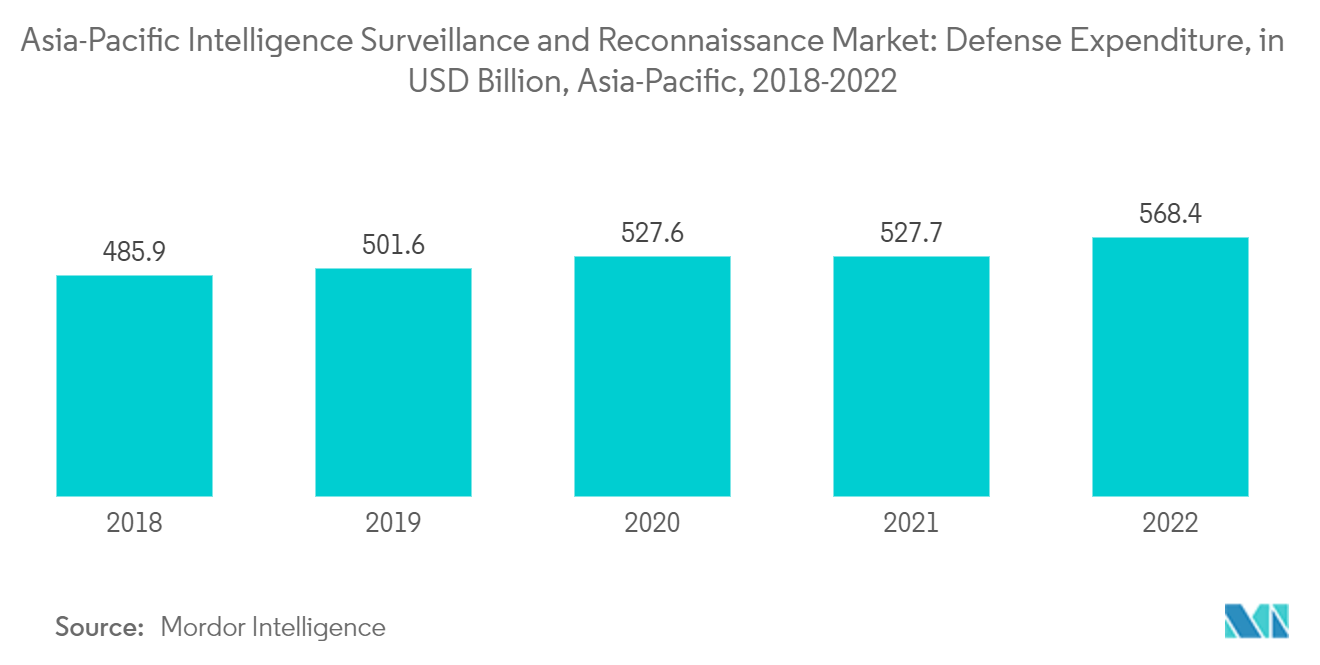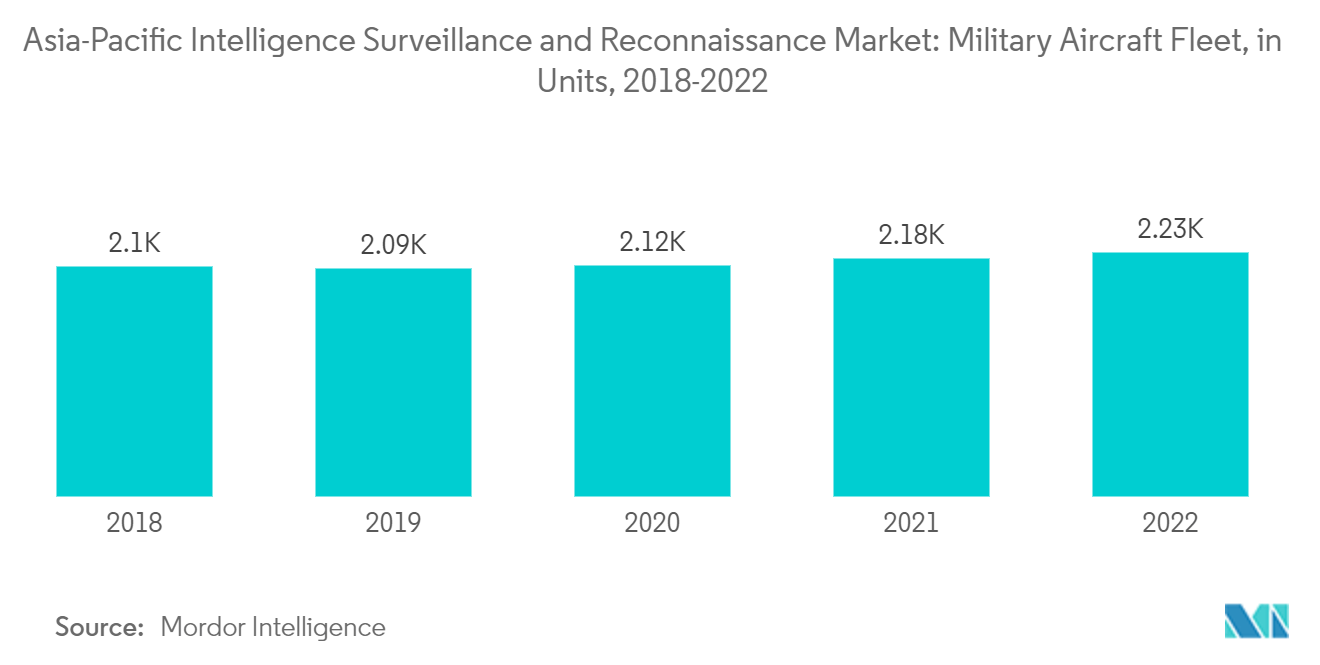Market Trends of Asia-Pacific ISR Industry
Air Segment to Dominate Market Share During the Forecast Period
- The aerial platforms provide extensive ISR capabilities. This represents the first additional capability required by a combat decision-maker to make informed decisions during a crisis or contingency situation. Both crewed (reconnaissance aircraft and airborne early warning aircraft) and unmanned aerial ISR systems are used to synchronize the planning and operation of the components of this ISR enterprise, including analysis and production capabilities, to enable current and future operations.
- Several countries in the region are robustly investing in upgrading their airborne capabilities through new procurement or modernization of their existing fleet. As of October 2023, South Korea had planned to acquire more AEW&C aircraft to bolster its capabilities in airborne surveillance and intelligence-gathering domains. It was reported that the country is planning to procure four additional Baekdu reconnaissance aircraft during 2022-2026 to replace the aging four Hawker 800 aircraft.
- Similarly, China also unveiled its new aircraft to counter any electronic warfare threats to the country. For instance, in Jan 2022, China’s J-16D aircraft first appeared at the island’s air defense zone. This jet is equipped with electronic interface functions and is combat-ready. The airborne intelligence, surveillance, and reconnaissance sectors are expected to grow significantly over the forecast period.

India is Anticipated to Witness Highest Growth During the Forecast Period
- India has strained relations with its neighboring countries, Pakistan and China. This situation demands the possession of a persistent ISR capability along its land-based borders. Also, with the emergence of the world’s major energy and trade routes through the Indian Ocean, several maritime security threats, such as piracy, maritime terrorism, illegal, unreported, and unregulated (IUU) fishing, illegal immigration, and smuggling of arms and drugs, have emerged over the years. These issues, along with the growing focus of China on the Indian Ocean region, demand continuous maritime patrol and surveillance.
- From the communications perspective, the Army is targeting an increased number of military satellites, hinting at a possible purchase of related technology. For instance, in March 2022, the Defence Acquisition Council cleared the first step of procurement for indigenously designed and built GSAT 7B, a multiband, military-grade satellite for the Army.
- Furthermore, the increasing technology and electronic warfare have been driving the demand for technologies to effectively tackle electronic warfare. In line with this, new developments have been occurring in the Army to keep up with global technology. For instance, in March 2022, the Defence Ministry of India signed a partnership with Bharat Electronics Limited (BEL) to supply an Advanced Electronic Warfare suite for the Indian Air Force fighter jets. The contract was signed between the Ministry of Defense and BEL. Several such developments across the country and the country’s proximity to other potential threats make it essential for the armed forces to expand their capabilities and, consequently, drive the market demand towards significant growth rates during the forecast period.

